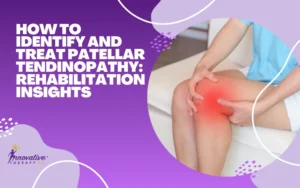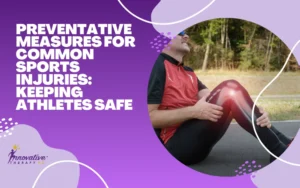You’re probably here because your healthcare provider diagnosed you with inflammation in the bursa of the pelvis or you are digging deeper into trying to diagnose your own hip pain.
One of the most common causes of hip pain is Bursitis or sometimes referred to as “bursa of the pelvis”.
As a practicing physical therapist for the past 30 years, I would like to guide you through all the most important information you need to know about hip bursitis and how to begin the process of finding the best treatment plan for you.
If you’re ready, let’s dive right in!
Jump To Section:
- What is a Bursa?
- What is Bursitis?
- How Do You Get Hip Bursitis?
- How Do You Treat Hip Bursitis?
- What To Do Next?
What is a Bursa?
Bursa are fluid-filled sacs that act as a cushion to prevent the rubbing of one body part against another.
This is similar to brake pads in a car, which keep the two metal parts from rubbing against each other to prevent them from wearing out.
The most common places for a bursa are on top or under a bone to reduce friction and keep a tendon from rubbing against the bone.
What is Bursitis?
Bursitis literally means inflammation in the bursa which is primarily a mechanically based pain and has many underlying causes.
Before I go further into what is causing your pain, I want to introduce you to the four bursae in your pelvis and the most common reasons for them to cause you discomfort or even unbearable pain.
Trochanteric Bursa
The trochanteric bursa is one of the two major bursae that surround the hip joint and is one of the most common types of hip bursitis.
It is located at the top, outside area of the thigh, sitting over the greater trochanter.
When you are experiencing pain from trochanteric bursitis it is difficult to stand on the affected hip.
Trochanteric bursitis symptoms happen when walking, standing, and laying on the affected side.
Iliopsoas Bursa
The iliopsoas bursa is located just in front of the actual hip joint, frequently called the groin.
This is also known as ischial bursitis because of its location on top of the ischial tuberosity.
This is a less common type of bursitis and can mimic arthritis.
The symptoms are most common when with affected side leg is pushed off the floor when walking.
If you are experiencing symptoms in the groin area while standing from a seated position you may have this type of bursitis.
Gluteus Medius Bursa
If you experience pain in the top, front of the thigh (which is to the outside of the groin), you might have Gluteus Medius bursitis.
This is a small bursa with many surrounding tissues which can make it difficult to isolate on yourself.
The soft tissues around this bursa create a sensation of deep burning which might come and go as you walk.
Ischiogluteal Bursa
Ischiogluteal bursitis, if you can pardon the pun, is a pain in the butt, literally.
It hurts in the buttocks so sitting becomes hugely uncomfortable due to the pain which is right over the bony prominence you sit on called the ischial
This is not one of the two major bursae around the hip.
However, when your experience pain in this bursa sitting down is a challenge you want to avoid.
This is also referred to as ischial bursitis because the ischial tuberosity sits on top of the fluid-filled sac.
How Do You Get Hip Bursitis?
Hip Bursitis can be caused by:
- insect bites
- systemic infections in the body
- exposure to parasites
- spine problems
- muscle imbalances
- repetitive motion injuries (overuse injuries)
- Limping from another injury
- direct injury to the pelvis
- scar tissue from surgeries
- leg length differences
Spine problems can refer to pain in the hip making it feel like you have a hip problem when the issue is in your spine.
This is quite common because any abnormal walking can place stress through the bursa and cause inflammation.
Muscle imbalances (one muscle is too strong, another is too weak) in the hip muscles which pull on the joints in imbalanced directions are also something I see often.
Medical conditions such as diabetes, MS, strokes, leg length differences, limited mobility due to rheumatoid arthritis, and morbid obesity are all risk factors for hip bursitis.
The bottom line is uneven, imbalanced use of the pelvic/hip region for any reason can result in hip bursitis.
Is Bursitis Serious?
Bursitis can be serious and can change the way you move, contributing to wear and tear in the joints above and below the bursa which is swollen.
This wearing can cause pain in joints and tendons or muscle tissues as the brain will seek to find a comfortable way to move while putting more stress on the body.
Over an extended period of time, this results in more symptoms that spread through the body one joint or muscle group at a time is a serious problem.
How Painful Is Hip Bursitis?
Hip bursitis symptoms can range from mild to incapacitating and typically begins as a mild intermittent distraction and over long periods of time the problem gets progressively worse.
Individuals with more risk factors such as diabetes, obesity, and a sedentary lifestyle will typically result in more symptoms and a longer recovery process.
How Do You Treat Hip Bursitis?
The way you treat hip bursitis varies depending on which fluid-filled sac is inflamed, how long it has been inflamed, your age, activity level, and your symptoms as well as underlying conditions.
It could be as simple as buying a properly fitting shoe insert and attending physical therapy sessions or as challenging as needing to lose weight.
A good physical examination is one of the best ways to determine what is the cause of your symptoms.
Your daily habits will also need to be considered and evaluated as these activities may be causing repetitive stress.
Once you know the cause, a skilled Physical Therapist can discuss a treatment plan with you that will need to include specific movement activities to bring your entire body into balance.
Balancing your body might include strengthening exercises and stretching activities and help y’all o your body parts work together.
Ice and/or heat can relieve pain but usually only give temporary symptom relief.
Nonsteroidal anti-inflammatory drugs can reduce the swelling but have some significant side effects such as stomach upset, and heartburn among other issues.
A worst-case scenario might include surgical removal by orthopedic surgeons.
A good rule of thumb is to avoid repetitive motion activities especially if these activities increase your symptoms.
This might include climbing stairs, walking in poor shoes, or sleeping on your side.
What Happens If Bursitis Is Left Untreated?
If your bursitis is left untreated, hip bursitis frequently becomes worse and chronic bursitis is more difficult to treat
Muscles become more and more imbalanced in the pelvic region and the legs.
The more imbalanced the tissues become the longer it takes physical therapy treatment to bring the balance back.
Some people will use chemicals (medications) to temporarily stop the pain while ignoring the muscles and hip joint imbalances.
This type of initial treatment without other treatments causes pain in other body parts like your lower back or knees.
Is Walking Good For Bursitis?
Yes! and No!
Repetitive activities such as walking can look like a double edge sword.
If you have a desk job sitting 8 hours a day, walking could be what you need to get your circulation going and promote healing.
However, walking with worn-out shoes, an imbalance gait pattern due to past injuries, or starting with too far of a distance can make bursitis worse.
Want a walking regime I recommend for measuring your pain and gradually increasing your ability to exercise?
Just join my email list below and I’ll immediately send you our Ramp it up Walking System.
What To Do Next?
Resolving pain involves making a few choices.
You can either ignore it or you can start taking steps to resolve it.
For those looking to improve their quality of life right now, a great first step is to download our free guide 5 Daily Stretches That Can Reduce Your Hip Pain In 1 Week Or Less.
Just drop your email below and we will send a PDF straight to your inbox.
If you think I missed something or have a more specific question for me, please email me directly at mary@innovativetherapypc.com and I will get back to you promptly. (I read every email)






8 Responses
THANKYOU . I d love the stretching exercises .
I am 37 diagnosed with think, I would like some information please and thank you
I WOULD LOVE THE STRETCHING EXERCISES, THANK moniegee12@gmail.com
Ramp it up Walking System and 5 Daily Stretches That Can Reduce Your Hip Pain In 1 Week Or Less
Thx
5 daily stretches please
Yes I would appreciate the 5 stretches for hips
Please send me the stretches pdf. TY
Yes, I would love to have PDF of Exercises, I have trochanter and Iliopsoas pain. Thank you